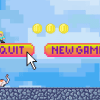Working well: the art of strategic breaks and genuine disconnection

The idea of taking a break from work may feel radical. Yet strategic pauses, whether they are micro-breaks during the workday or complete disconnection on holiday, are increasingly recognised not as indulgences, but as essential investments in productivity, creativity, and well-being. Far from being a sign of weakness or lack of commitment, stepping away at the right moments has been shown to make individuals and teams more effective.
Why strategic breaks matter
Research from the Harvard Business Review emphasises that our real currency at work isn't simply time, but energy. Short, regular 'micro-breaks' help replenish focus, stave off fatigue and sustain performance over the course of the day. These pauses are most effective when they involve a genuine change of mental or physical activity, such as stretching, a brief walk or even a few minutes of mindful breathing, rather than simply scrolling through a phone.
Health-focused workplace programmes have popularised 'booster breaks', short intervals in which employees engage in activities that promote well-being, such as simple exercises or guided relaxation. These breaks have been linked to improved mood, reduced stress and, over time, lower health risks for those in sedentary roles.
Patterns also matter. Productivity-tracking data suggests there is an optimal rhythm to work and rest: one commonly cited model advocates working intensely for around 52 minutes before taking a 17-minute break. Others suggest slightly longer cycles, such as 75 minutes of concentrated effort followed by 33 minutes of rest. The point is not that one schedule suits everyone, but that sustained high performance is better achieved through structured alternation between focus and recovery.
Vacation: escaping work begins before the outbound flight
If the benefits of daily breaks are clear, so too is the need for longer stretches of complete disengagement. Yet fully 'switching off' during annual leave remains a challenge for many. The Associated Press recently highlighted how smartphones and remote access tempt employees to check emails or attend virtual meetings from the beach or a mountain cabin. One marketing professional described missing her child's first attempts at swimming because she felt obliged to respond to a client.
The key to avoiding this trap lies in preparation and boundary-setting. Experts recommend informing colleagues and clients of your absence well in advance, activating out-of-office responses, and setting clear rules for communication - ideally, none at all. For those who feel compelled to stay informed, a single, short daily check-in may help reduce anxiety while keeping the rest of the day free. Removing or disabling work applications from personal devices can also reduce temptation. Importantly, leadership behaviour sets the tone: when managers model true disconnection, employees are more likely to follow suit without guilt.
The deeper value of stepping away
Beyond maintaining day-to-day productivity, more extended breaks. Mini-sabbaticals and even 'adult gap years' allow people to pursue personal projects, travel, volunteer or simply rest. Those who take such breaks often report returning to work with fresh perspectives, renewed energy and greater clarity about their priorities.
There is also growing recognition that stepping away fosters qualities that are difficult to cultivate in constant motion. A reflective essay in the Financial Times framed rest not as wasted time but as fertile ground for empathy, creativity and deep thinking. This aligns with the philosophy of "slow productivity" advocated by some workplace thinkers, which encourages a focus on producing quality work at a sustainable pace rather than chasing perpetual busyness.
The science of recovery
Psychologists refer to this process as 'detachment', a mental and emotional uncoupling from work demands. Detachment allows the brain to consolidate learning, reset emotional states and replenish cognitive resources. Without it, workers risk chronic stress, reduced creativity and eventual burnout. Even brief mental respites can activate the brain's default mode network - a system associated with problem-solving, imagination and insight. It is no coincidence that solutions to stubborn problems often appear while walking, cooking or showering, rather than while staring at a computer screen.
The evidence is clear: well-timed breaks, whether short pauses during the workday or long holidays away from the office, are not luxuries, but necessities. They restore energy, improve performance, foster innovation and protect mental health. Structured rest is a discipline in itself, one that requires intention, planning and sometimes the courage to disconnect in a culture that prizes constant availability.
To work well, we must learn to value time away from our desks as much as time spent at them. The healthiest and most creative output often flows after we have given ourselves permission to truly step away. In the long run, productivity is not about working without pause, but about knowing when to stop.

 For all latest news, follow The Daily Star's Google News channel.
For all latest news, follow The Daily Star's Google News channel. 








Comments